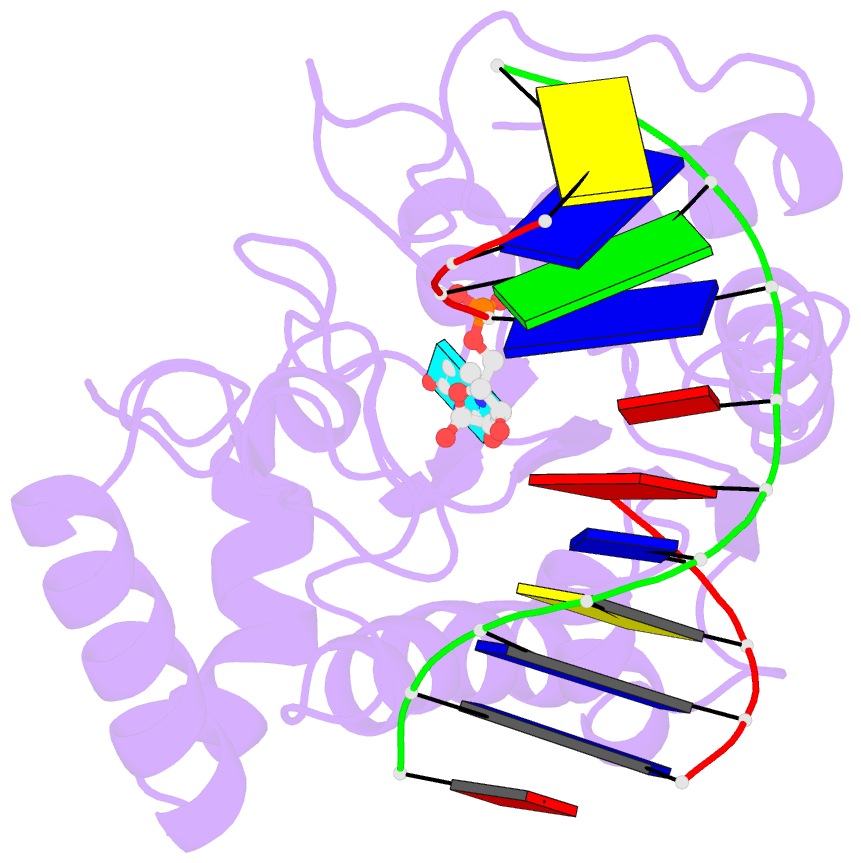Summary information and primary citation
- PDB-id
- 1ssp; SNAP-derived features in text and JSON formats;
DNAproDB
- Class
- hydrolase-DNA
- Method
- X-ray (1.9 Å)
- Summary
- Wild-type uracil-DNA glycosylase bound to uracil-containing DNA
- Reference
- Parikh SS, Mol CD, Slupphaug G, Bharati S, Krokan HE, Tainer JA (1998): "Base excision repair initiation revealed by crystal structures and binding kinetics of human uracil-DNA glycosylase with DNA." EMBO J., 17, 5214-5226. doi: 10.1093/emboj/17.17.5214.
- Abstract
- Three high-resolution crystal structures of DNA complexes with wild-type and mutant human uracil-DNA glycosylase (UDG), coupled kinetic characterizations and comparisons with the refined unbound UDG structure help resolve fundamental issues in the initiation of DNA base excision repair (BER): damage detection, nucleotide flipping versus extrahelical nucleotide capture, avoidance of apurinic/apyrimidinic (AP) site toxicity and coupling of damage-specific and damage-general BER steps. Structural and kinetic results suggest that UDG binds, kinks and compresses the DNA backbone with a 'Ser-Pro pinch' and scans the minor groove for damage. Concerted shifts in UDG simultaneously form the catalytically competent active site and induce further compression and kinking of the double-stranded DNA backbone only at uracil and AP sites, where these nucleotides can flip at the phosphate-sugar junction into a complementary specificity pocket. Unexpectedly, UDG binds to AP sites more tightly and more rapidly than to uracil-containing DNA, and thus may protect cells sterically from AP site toxicity. Furthermore, AP-endonuclease, which catalyzes the first damage-general step of BER, enhances UDG activity, most likely by inducing UDG release via shared minor groove contacts and flipped AP site binding. Thus, AP site binding may couple damage-specific and damage-general steps of BER without requiring direct protein-protein interactions.





